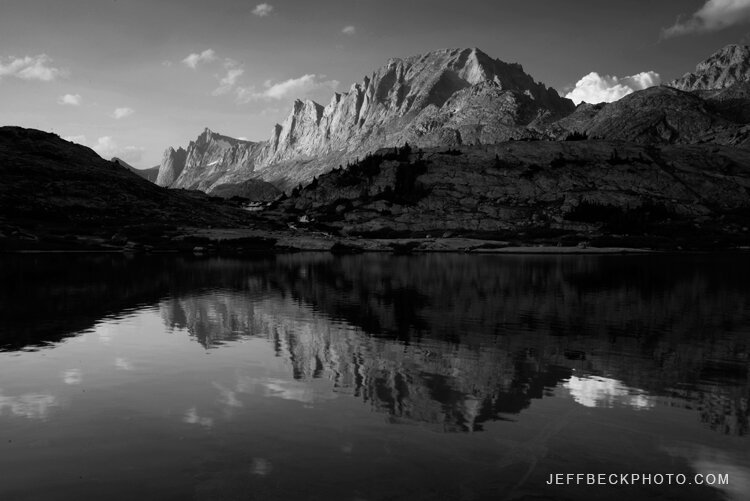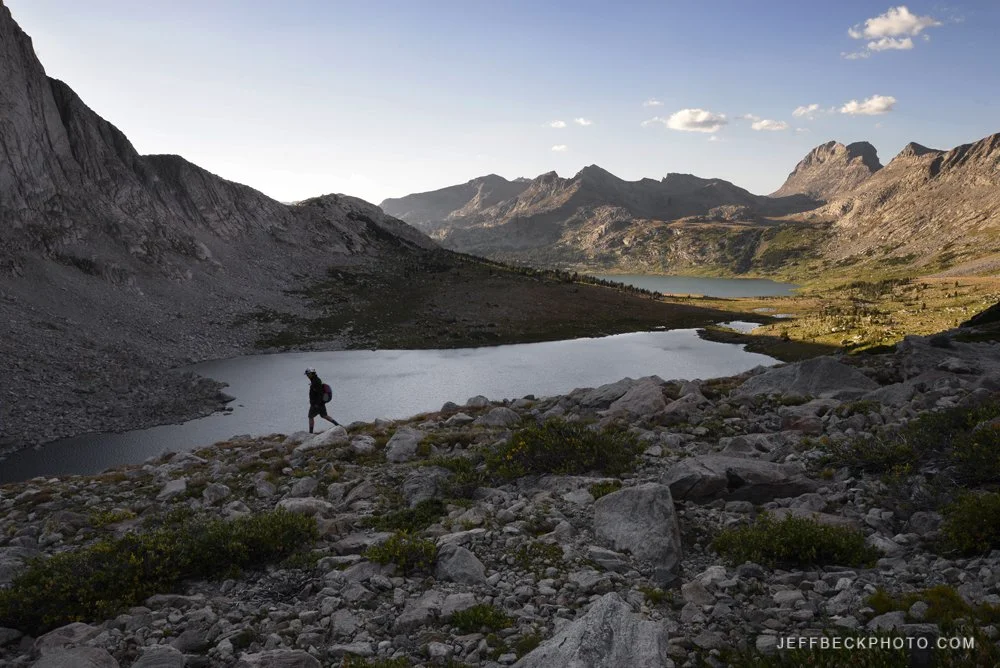EB hikes beside upper Titcomb Lake, Bridger Wilderness, Wyoming
I was lucky enough to spend seven days backpacking in the Winds in late August. Making it back in to Titcomb Basin after 20 years was a highlight. As was being back in the Wind River Range with Erik and Rosalie three years after our first trek together there. August twenty years ago was my first backpack in the Winds. This was my fifth. I’m hoping to increase that frequency over the next twenty years.
Our route went from Elkhart Park past Senaca Lake and Island Lake to Titcomb Basin then back to the Highline Trail which we followed over Lester Pass and down to the Cook Lakes Loop. One of the highlights of the trip was hiking to Wall Lake from our camp at Upper Cook Lake. We finished our loop on the Pole Creek Trail past Eklund Lake and back past Photographers Point to Elkhart Park.
Titcomb Basin and vicinity was a zoo. The scenery is undeniable but at times the amount of traffic on the trail was noisy and annoying. We found a gorgeous campsite at the end of a string of lakes below Titcomb Lakes. When we got there there was one other group and we tried to give them a little room and still stay legal by not camping too close to the outlet stream. We turned around and two more groups had moved in, one on either side of us.
On the other side of Lester Pass we finally got a little solitude. It seemed like there were only two other groups in the entire Cook Lakes area while we were there. On two jaunts to Wall Lake, one in the evening by myself and then again in the morning with Erik, we didn’t see another soul.
I loved almost everything about this trip except the light. On day three thick smoke from distant wildfires filled the range and never fully cleared. Looking at my photos from our second evening, and my most productive landscape photo session of the trip, the air was already less than clear. This definitely forced me to concentrate on details which was not necessarily a bad thing. I’ve come home from many a trip to look at my photos and think, I wish I would have focused more on details instead of trying to get everything in the frame all the time.
Some of my favorite images of the trip and certainly the most colorful were of butterflies. There were a ton of butterflies flitting around high wildflower meadows. The Fritillaries were particularly abundant, but the California Tortoiseshells were the most approachable.
Fremont Peak reflected in a small lake below Titcomb Basin, Wind River Range, Wyoming































